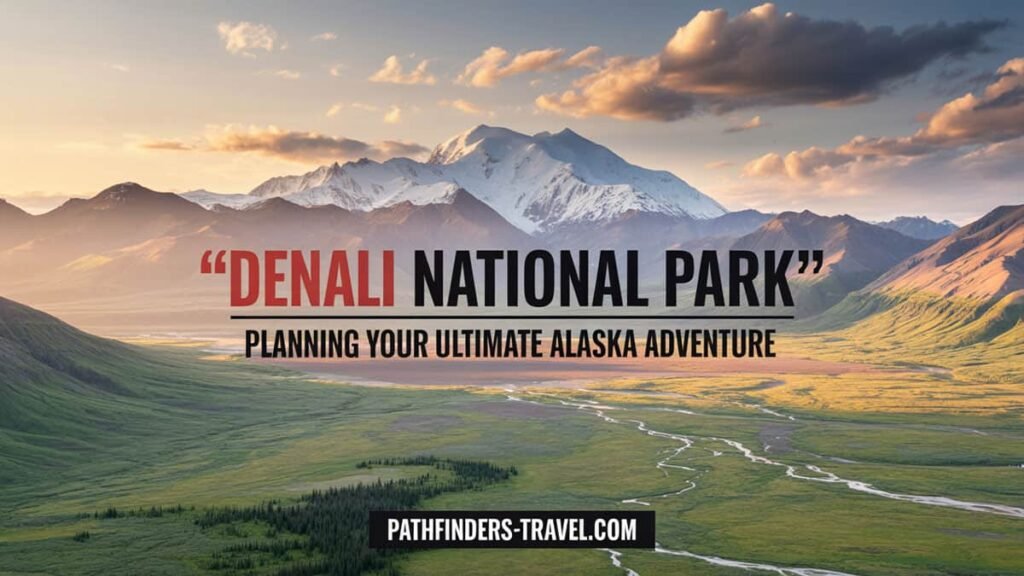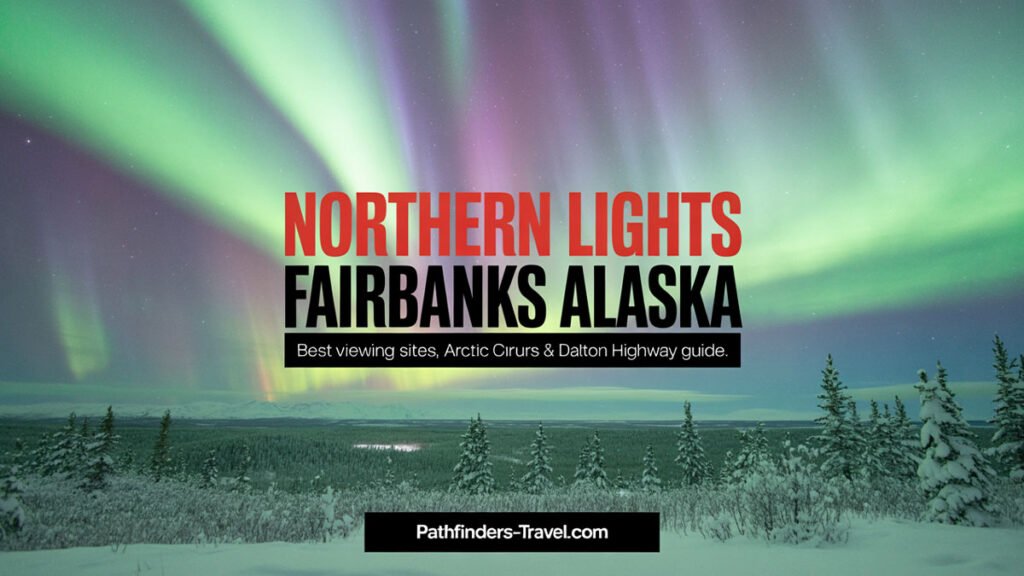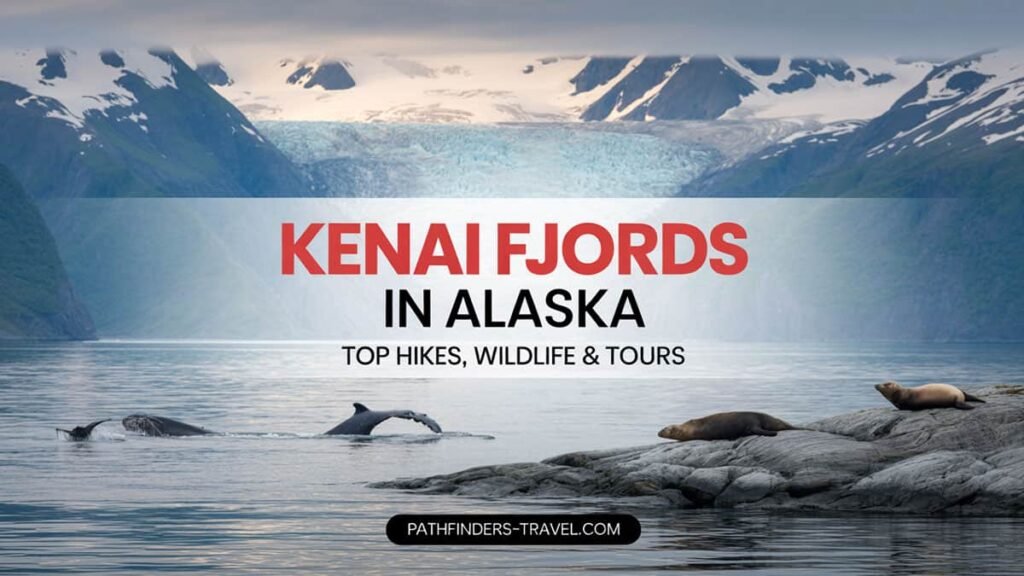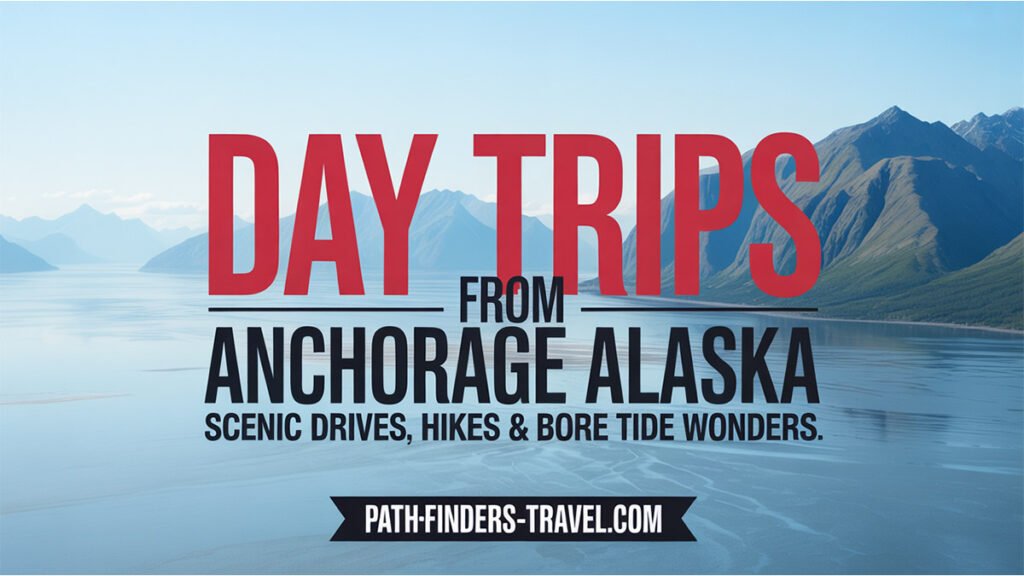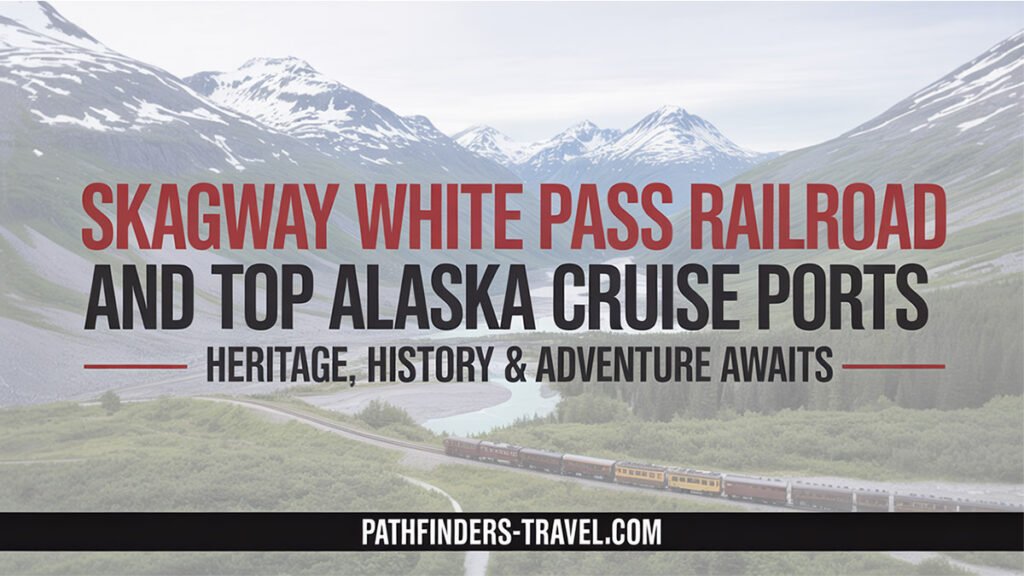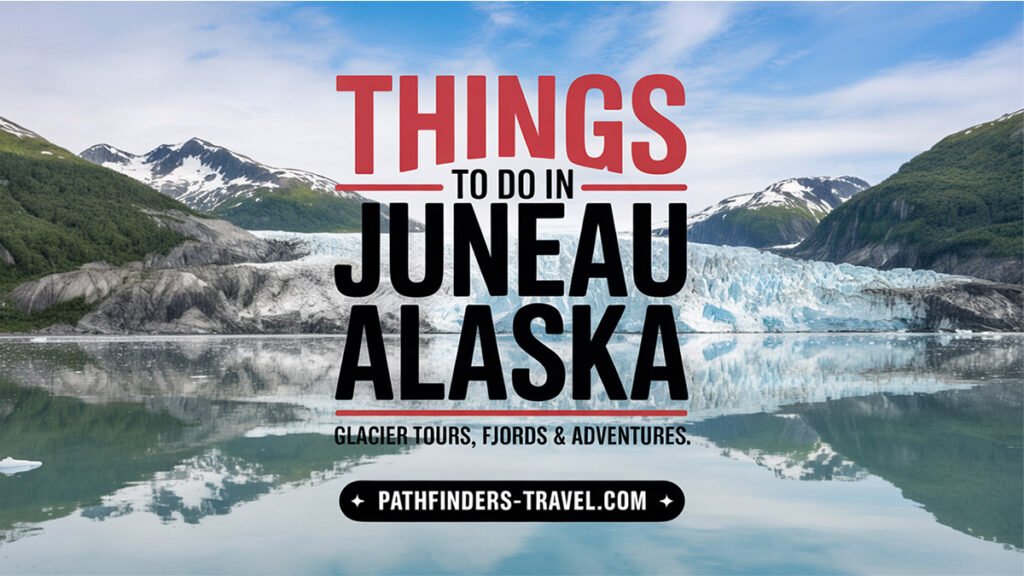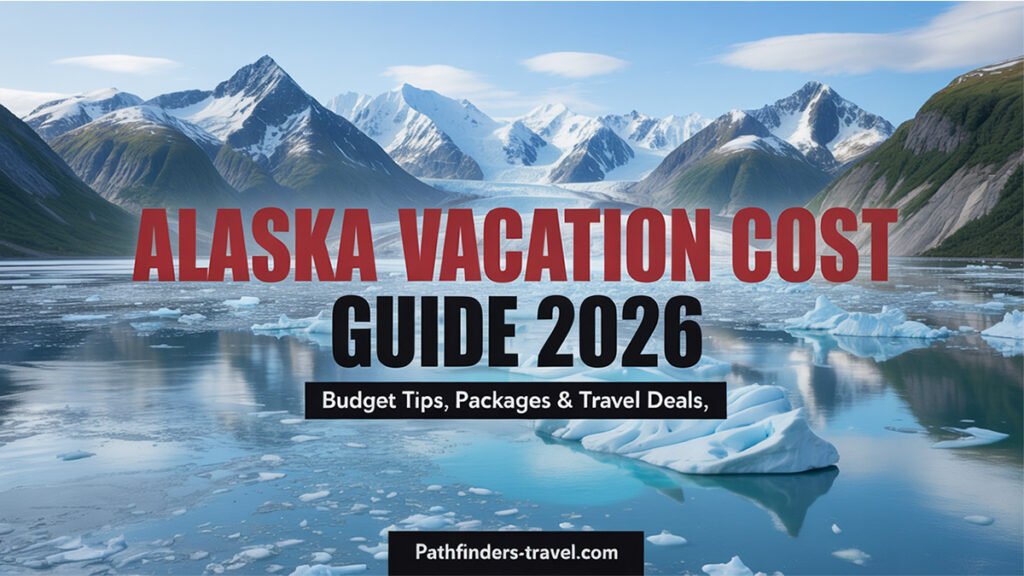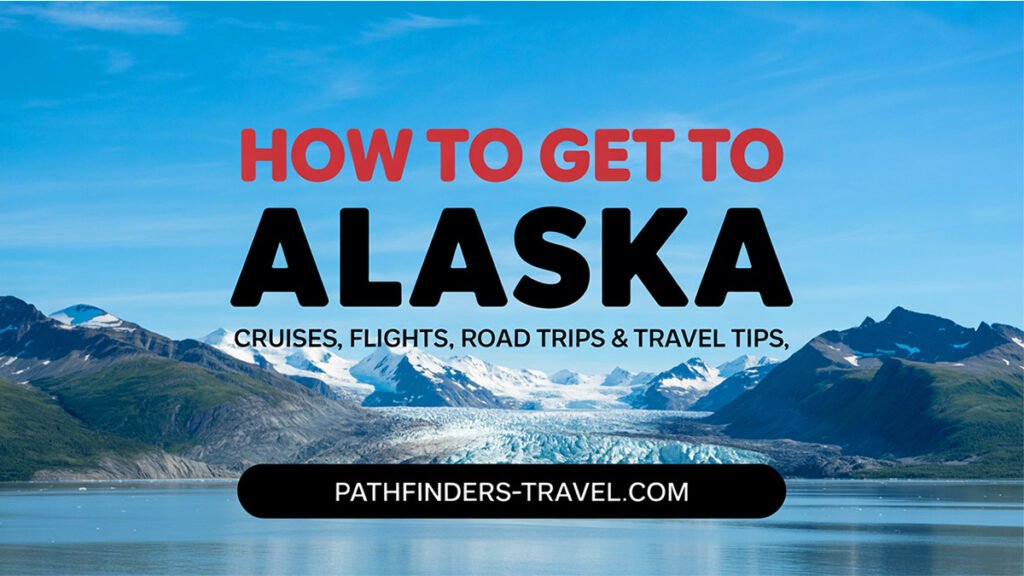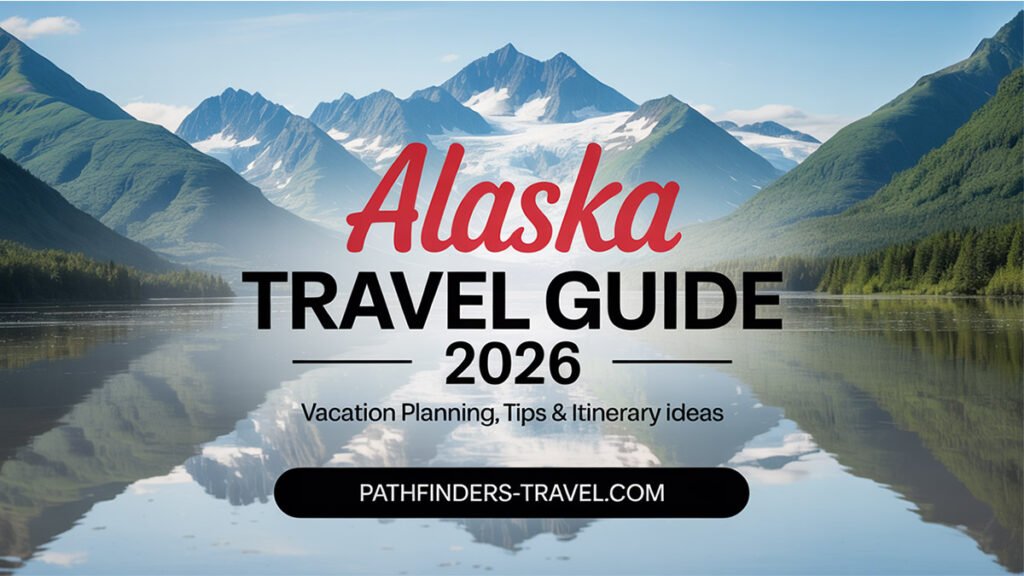ALASKA TRAVEL GUIDE
Overview
Alaska stands as North America’s last great frontier, where massive glaciers carve through mountains, grizzly bears fish for salmon in pristine rivers, and the northern lights dance across Arctic skies. From the towering peaks of Denali to the fjord-carved coastline of the Inside Passage, Alaska delivers raw wilderness experiences that exist nowhere else on Earth. You can witness calving glaciers in Kenai Fjords National Park, spot brown bears at Brooks Falls, explore gold rush history in Skagway, and chase the midnight sun—all in one epic journey.
We absolutely love traveling to Alaska. The combination of accessible wilderness, friendly locals, and well-developed tourism infrastructure makes exploring this vast state surprisingly manageable. Whether you’re planning your first Alaska vacation or returning for another adventure, this comprehensive Alaska travel guide covers everything you need to know for an unforgettable trip in 2026.
Anchorage serves as the perfect launching point for most Alaska adventures—it’s ideal for experiencing urban amenities before venturing into the wilderness, taking best day trips from Anchorage to nearby glaciers and hiking trails, and connecting to destinations throughout the state. Juneau offers unparalleled glacier access and whale watching, while Fairbanks provides your best opportunity for northern lights viewing. For the ultimate Alaska experience, consider combining a cruise through the Inside Passage with interior exploration of Denali National Park and Fairbanks.
From the Russian heritage of Sitka to the salmon-filled waters of the Kenai River, Alaska is a summer destination that promises life-changing wildlife encounters and landscapes that will leave you speechless. Whether you’re seeking thrilling bear viewing experiences, planning a trip to Denali National Park, fishing for halibut in Homer, or simply want to witness glaciers calving into the sea, Alaska delivers adventures beyond imagination.
Bookmark this Alaska travel guide and keep checking back for more of our best Alaska travel tips and hidden gems!
Country Snapshot
Safety
Alaska is generally very safe for travelers, with welcoming communities and low crime rates in tourist areas. The primary safety considerations relate to wildlife encounters and wilderness conditions. Always maintain proper distance from bears and moose, carry bear spray in backcountry areas, and never approach wildlife for photos. Weather can change rapidly, especially in mountainous regions and on the water, so pack layers and be prepared for sudden condition shifts.
When hiking the best hiking trails in Alaska like Harding Icefield or exploring remote areas, inform someone of your plans and expected return time. Cellular service is limited or nonexistent in many wilderness areas. If you’re planning Denali backcountry hiking or visiting remote locations, consider renting a satellite communication device. The midnight sun in summer means extended daylight hours, but also means you need to be conscious about getting adequate rest.
Most Alaskans are incredibly friendly and eager to share their love of the state with visitors. Learning basic bear safety protocols and understanding how to behave around wildlife will ensure you have safe, respectful encounters with Alaska’s incredible fauna.
Accommodation
Accommodation options in Alaska range from luxury lodges to budget hostels, with excellent choices in gateway cities like Anchorage, Juneau, and Fairbanks. Anchorage offers the widest selection of hotels and vacation rentals, serving as a convenient base for exploring nearby attractions. For unique experiences, consider staying at wilderness lodges accessible only by floatplane, historic hotels in gold rush towns like Skagway, or waterfront properties in coastal communities.
Summer is peak season (May through September), so book accommodations well in advance, especially if you’re planning a trip to Denali National Park or visiting during the peak Alaska salmon fishing season in July and August. Many lodges and seasonal properties close during winter months. You can search for the best accommodation deals in Alaska on Booking.com or Hotels.com.
Budget
Alaska vacation cost can be significant, but strategic planning helps manage expenses. Understanding your Alaska travel budget before departure ensures you can enjoy the experiences that matter most without financial stress.
Accommodation: Budget hostels start around $35-50 USD per night in cities, while mid-range hotels run $120-200 USD. Wilderness lodges and cruise packages represent premium options at $300+ per night.
Meals: Expect to pay $15-25 USD for casual dining, $30-50 USD for mid-range restaurants. Seafood, especially fresh salmon and halibut, is excellent but pricey. Grocery shopping in Anchorage, Fairbanks, or Juneau before heading to remote areas significantly reduces food costs. Remote communities have limited, expensive grocery options.
Alaska trip expenses also include activities: glacier kayaking tours run $150-250 USD, bear viewing flights to Katmai cost $600-800 USD, and Kenai Fjords National Park cruises range from $150-250 USD. The Skagway White Pass Railroad costs around $150 USD for the scenic journey. Many of the best hiking trails in Alaska, including Harding Icefield Trail and trails in Denali, are free to access.
Affordable Alaska travel tips: Consider visiting during shoulder season (May or September) for lower prices, book Alaska vacation packages that bundle transportation and activities, take advantage of free activities like hiking and wildlife viewing, and shop Alaska travel deals online months in advance.
Transport
Most visitors face the Alaska cruise vs flight decision. Flying into Ted Stevens Anchorage International Airport provides the fastest access, with direct flights from Seattle, major western US cities, and seasonal international routes. Alaska Airlines dominates service with the most frequent connections. From Anchorage, you can easily rent a car and begin your Alaska road trip guide adventures.
The Alaska Marine Highway System (state ferry) offers a scenic alternative, connecting Bellingham, Washington, to Southeast Alaska communities. This multi-day journey through the Inside Passage showcases stunning coastal scenery but requires significantly more time than flying.
Cruises represent another popular option for experiencing Southeast Alaska’s Inside Passage, visiting ports like Juneau, Skagway, and Ketchikan. However, cruise-only trips limit your ability to explore interior highlights like Denali and Fairbanks. Many travelers combine a cruise with a land tour for comprehensive coverage.
Getting Around Alaska
Alaska’s vast size means transportation requires careful planning. The state has limited road connectivity—you cannot drive to Juneau, Alaska’s capital, or most Southeast Alaska communities.
Rental cars provide maximum flexibility for exploring connected regions. From Anchorage, you can drive to Seward, Homer, Talkeetna, Fairbanks, and Denali. The Seward Highway scenic drive ranks among America’s most beautiful routes. For adventurous travelers, driving the Dalton Highway to the Arctic Circle is an unforgettable Alaska road trip, though it requires preparation and a sturdy vehicle.
Domestic flights are essential for reaching destinations like Juneau, Kodiak, and remote wilderness lodges. Alaska Airlines and smaller regional carriers connect communities throughout the state. Budget flights between major cities if booked early.
The Alaska Railroad offers scenic journeys between Anchorage, Talkeetna, Denali, and Fairbanks, with massive windows perfect for wildlife spotting and glacier viewing. The Coastal Classic route from Anchorage to Seward is particularly stunning.
Ferries serve coastal communities in Southeast Alaska and link some remote villages. The ferry from Whittier to Valdez offers spectacular glacier views.
For navigation in cities, Google Maps works well. However, many remote areas lack cellular coverage, so download offline maps before departing urban areas.
Best Activities
The Best Activities & Tours That I Recommend

